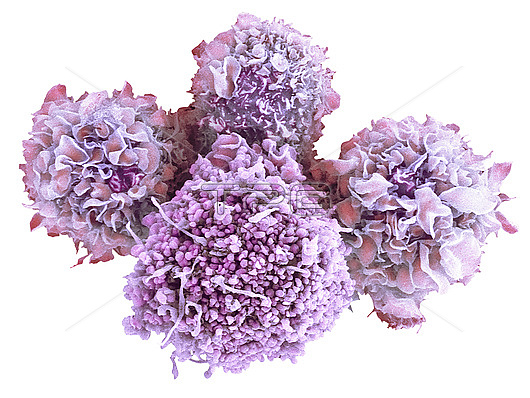
Coloured scanning electron micrograph (SEM) of human dendritic cells (DC) grown in suspension (PBX Fix B). Dendritic cells (also known as histiocytes or Langerhans cells in the epidermis) are part of the human immune system. In the central nervous system dendritic cells are known as microglia, and in the liver as Kupffer cells. Dendritic cells are macrophage cells that are found in the body's tissues. The long extensions seen projecting from the cells help them to move. The dendritic cells recognise and engulf foreign cells and proteins (also called antigens). Dendritic cells may then display the foreign antigen as a warning of the infection to other immune cells. They act as antigen presenting cells (APCs) that present the digested parts of phagocytosed pathogens to other immune system cells to enhance the immune response. Once activated, the dendritic cells migrate to the lymphoid tissues where they interact with T cells and B cells to initiate and shape the adaptive immune response. Magnification: x1,200 when shortest axis printed at 25 millimetres.
| px | px | dpi | = | cm | x | cm | = | MB |
Details
Creative#:
TOP27971615
Source:
達志影像
Authorization Type:
RM
Release Information:
須由TPG 完整授權
Model Release:
N/A
Property Release:
N/A
Right to Privacy:
No
Same folder images:

 Loading
Loading